Overland passage of migrating Common Scoter in the UK has been inferred for a long time, given the predictable appearance of birds on inland waterbodies in the spring and autumn. However, these typically small groups of birds represent only a tiny fraction of the huge flocks that winter around both the North Sea and Irish Sea coasts. If the majority of wintering individuals routinely ply this overland route, then this handful of grounded birds must be the exception rather than the norm.
As some of the pioneers of sound recording nocturnal migrants ('noc-mig'), the Sound Approach team was among the first to bring the phenomenon of nocturnal scoter migration to the attention of birders. The team's efforts have encouraged many people to invest in sound-recording equipment, consequently dramatically improving our understanding of the movements of many nocturnal migrants in time and space.
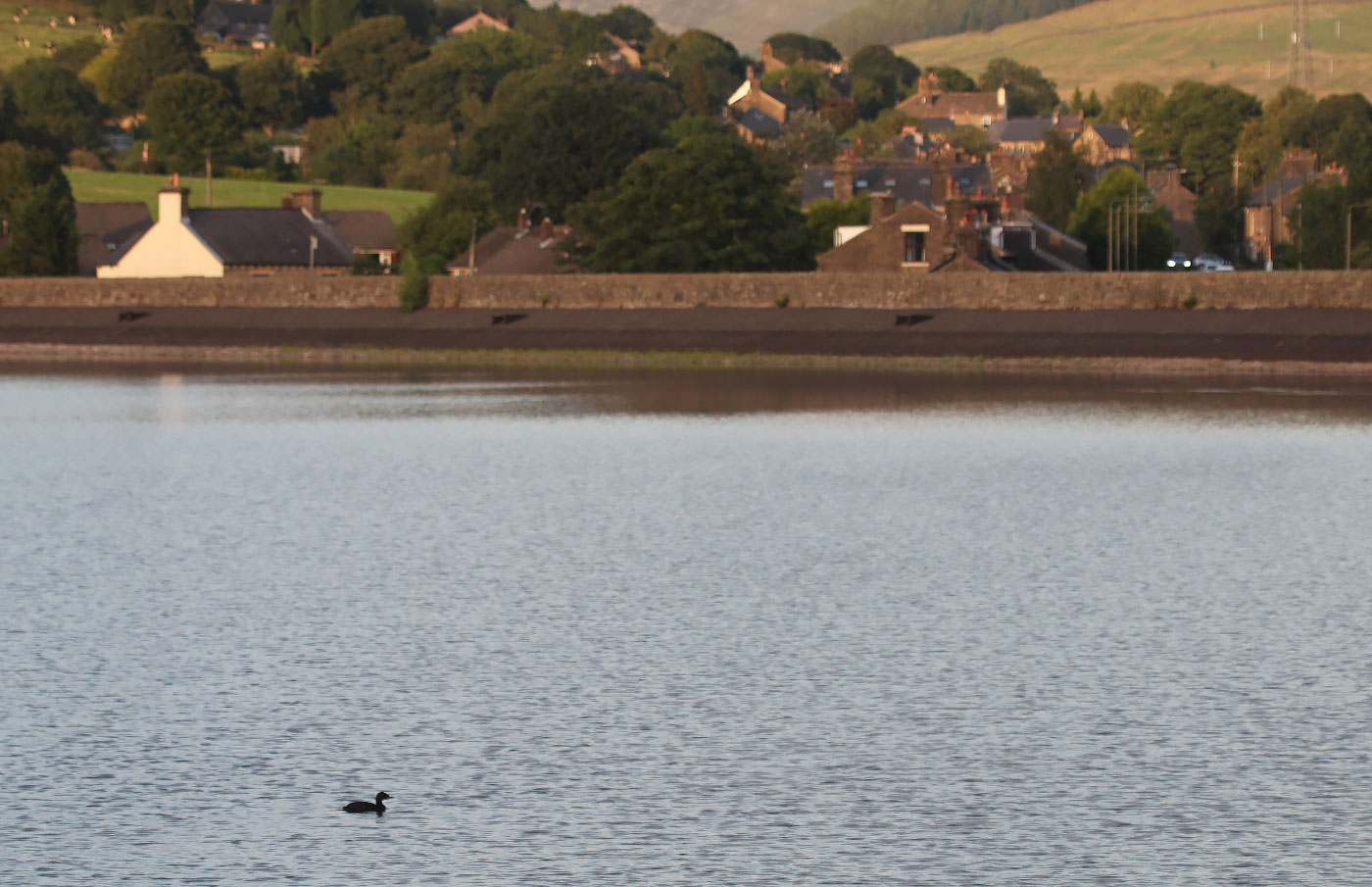
Common Scoter, Arnfield Reservoir, Derbyshire, 29 July 2019. The occasional lone birds or small flocks that appear on reservoirs on the Wirral-Humber route must belie a much larger nocturnal passage (Alex Lees).
We now know that scoter are an expected part of the nocturnal soundscape in some parts of the country between late March and mid-April, and then again from July to September. It has also become apparent that this is not a few brave individuals daring to undertake an adventurous overland route, but likely the bulk of the overwintering population moving across the spine of Britain. One of us (AL) has been recording scoter movements apparently comprising at least hundreds, if not thousands, of birds in the Peak District since autumn 2017. You can listen to these thrilling recordings, of waves of scoters moving low over Hadfield, Derbyshire, in March 2018 and again in March 2019.
It was AL again who was first to sound the alarm for a major movement on 31 March 2020, when scoter were again moving east over the Peak District.
Common Scoter flock now high and faint over Hadfield, Derbyshire, @BirdGuides not much else moving yet though but skies overcast and winds low for 1st time in a while #nocmig @BirdsDerbyshire @Derbyshirebirds
— Alex Lees (@Alexander_Lees) March 31, 2020
After rapid communication via social media networks, others further east in Yorkshire were also able to hear the birds moving 'live', while many more found evidence of birds passing on their recorders. The following night (1-2 April) saw birders eagerly awaiting another movement. The hope was realised shortly after darkness fell and news rapidly spread via Twitter amid a high level of interest among birders, many no doubt hoping to stave off any lockdown blues. Some people even camped out, trying – and in plenty of cases succeeding – to add Common Scoter to their garden lists.
The next morning, among strong interest in the phenomenon, we decided to co-ordinate an effort to record exactly where and when scoter were being recorded, across Britain and Ireland, and by the afternoon a community spreadsheet had been set up, and a Twitter campaign to collate records was underway. BirdGuides had already done some basis initial analysis and mapping of the movement on 1-2 April, which can be read here.
The next two nights saw continued scoter passage and maintained interest from birders, with 'Common Scoter' even trending nationally on Twitter. By Saturday afternoon, our community spreadsheet held upwards of 800 data points, and we set to work to visualise how scoters moved across the UK and Ireland over the course of multiple nights. We present below our initial maps detailing the nature of this spectacular migration, which obviously come with significant caveats about variation in observer activity.
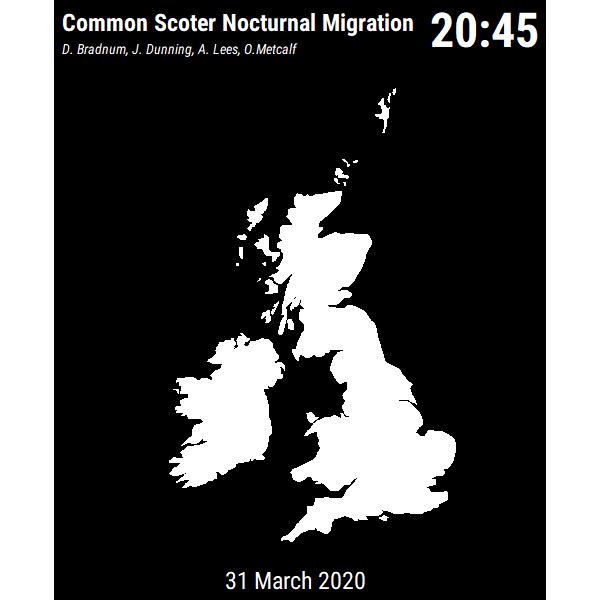
The first night (31 March-1 April) appeared to show the bulk of the passage occurring in a corridor between Liverpool Bay and the Humber estuary. This corridor remained the most important on all four nights analysed.
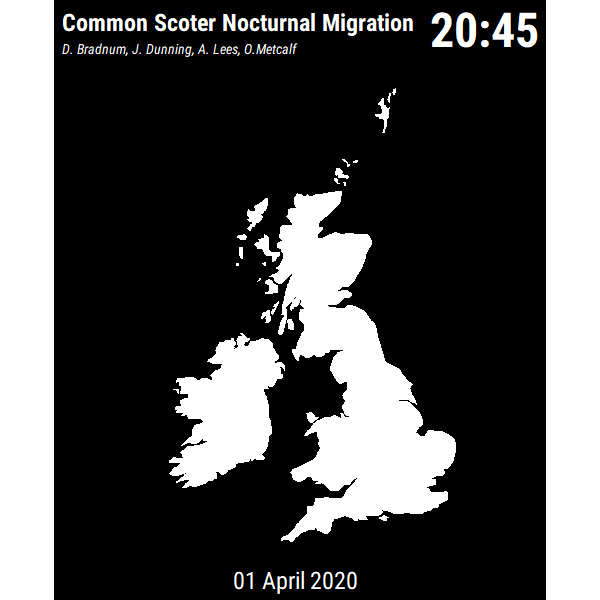
The second night (1-2 April) showed a similar pattern, but a cluster of points in the North-East suggests that birds use an additional northerly route, although lack of observer coverage in Cumbria makes it difficult to establish if the scoter originated from there, or further south.
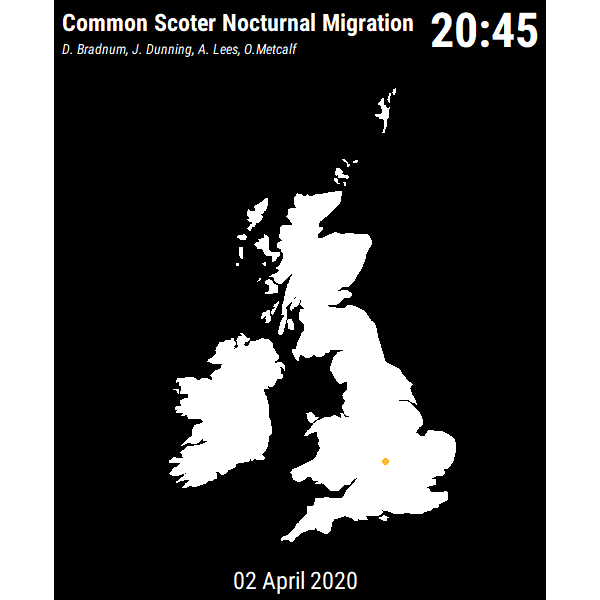
The night of 2-3 April showed a strong scoter passage departing the Severn, with apparent movement to both The Wash and the Thames Estuary, as well as some possible movement from the south coast and over London.
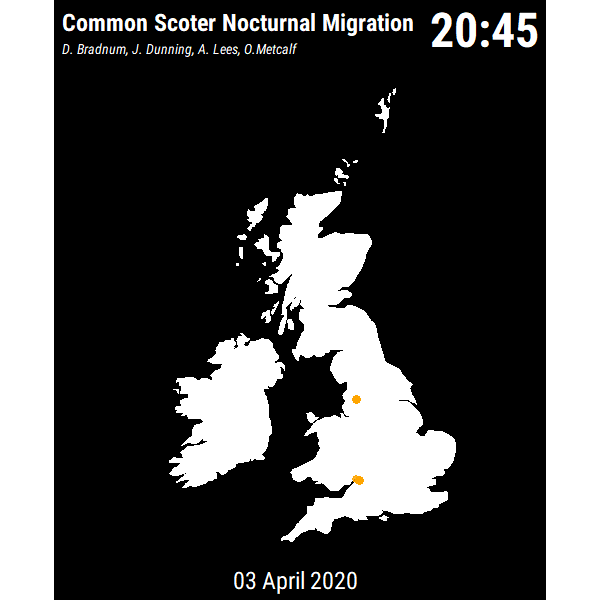
The night of 3-4 April seemed to show a reduced passage (possibly even because many birders had already added scoter to their garden list by this stage and weren't spending as much time outdoors listening), fairly evenly split between the Liverpool-Humber route and the Severn-Thames/The Wash routes.
The speed at which this dataset was amassed by the community to visualise this fascinating movement of birds has been quite remarkable – just four days passed between the inception of the idea to writing this piece and visualising the hitherto poorly documented migration of these seaduck. Of course, the rapid collection and preliminary analysis of this data has not been without its problems.
For example, we did not provide thorough enough instructions as to exactly what data was required – partly because we didn't have time to consider it ourselves – meaning that in some cases only first and last encounters have been recorded, while in others every flock has been entered. Additionally, as with many citizen science projects, our data is highly skewed by where people were listening, and, we have no way of measuring direction of travel, so not every point appearing on the map is necessarily representative of a migration route.
In many cases, scientists take months or years to carefully analyse and prepare results before making them public so as to reduce those biases as much as is possible. In this case, however, we decided that in the spirit of the birding community that so generously gave its time to help collect the data, we should make results available as early as possible. However, we now hope to undertake a more thorough analysis of the data, in order to place it in context alongside other datasets and gain a more thorough understanding of nocturnal scoter migration.
We'd also like to thank everybody who took the time to contribute to the community spreadsheet, or to spread word of the project over social media at such short notice.


